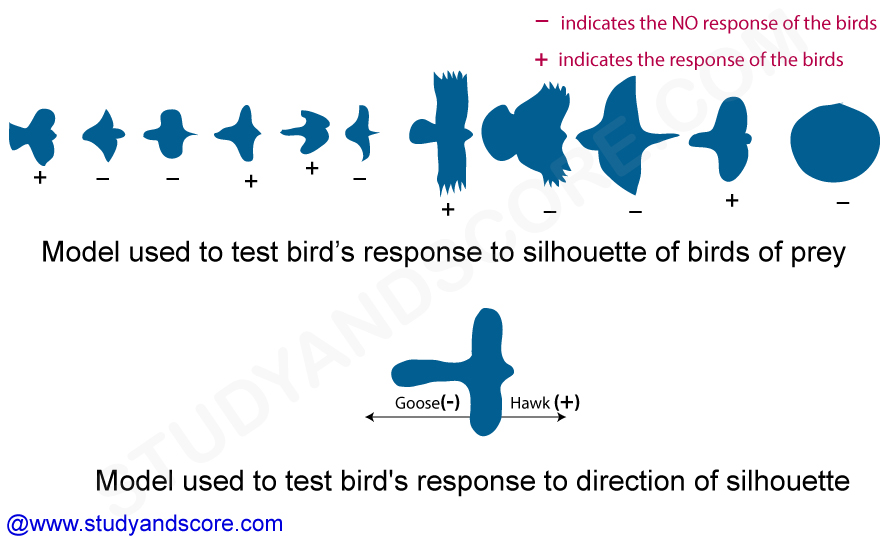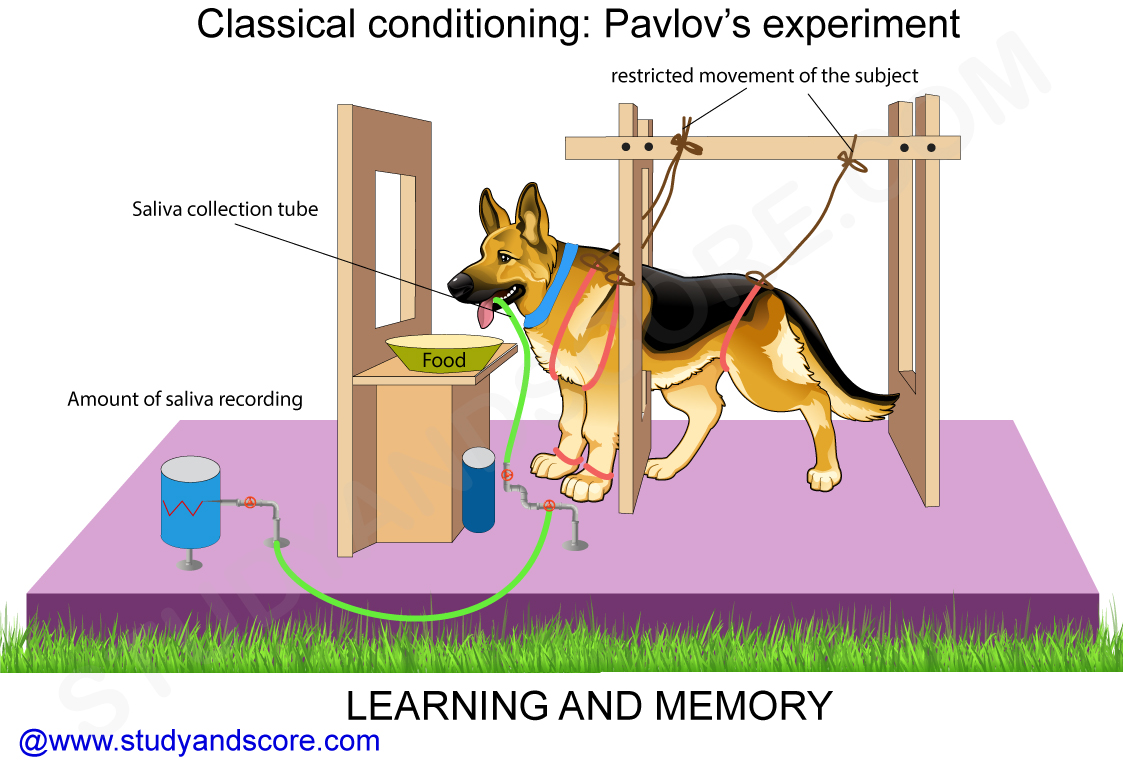Learning is animal’s ability to change behaviour based on the past experience. Leaning is divided into the following types,
Let us know about each of them one by one,
Non-associative learning
It is the animal’s ability to develop behaviour without developing a connection between the stimuli and response or by forming a connection between the two stimuli. It is further divided into,
Habituation: It is the common form of simple learning. It may be defined as the decline in response due to continuous repetition of the stimulus. Animals learn not to respond to the stimuli which do not have any significance.
For example, young birds learn that a butterfly is something to eat and not to be afraid of and that hawks prey upon the young birds. Tinbergen has shown that these young birds fly off when a hawk silhouette is displayed overhead. And the silhouettes of other shapes do not evoke this escape behaviour.
The characteristics that are important for the identification of hawks by the birds are the shape of the wings, the long tail and short neck. Models without these characteristics do not evoke the escape behaviour.

The above shown model to test the bird’s response to direction of silhouette will stimulate the escape behaviour only in particular direction. If it is moving in the direction of the short end of the body then it stimulates the escape behaviour and it does not do so if it moves in the reverse direction.
The ability to habituate prevents an animal from wasting its energy and attention on irrelevant stimulus. The speed of habituation depends on the nature of stimulus. In Nereis habituation occurs more rapidly when stimuli are given close together. For instance when animals were exposed to a bright flash light at half minute interval, it took less than 40 trials whereas it took no exposure when the interval was 5 minutes. Animals recover from habituation effect after a lapse of some time. Nereis recovers within an hour and some animals recover completely after 24 hours.
Sensitization: In contrast to habituation, sensitization refers to an increase in behavioural responses following repeated applications of a particular stimulus. Following sensitization, very little stimulation is then required to produce exceedingly large effects. Initial light stimulation of peripheral skin receptors may not activate pain neurons of the spinal cord. Continued, repeated stimulation of the same pathways will bring about central sensitization suggesting the presence of a more damaging skin issue. Continued inflammation may thereby cause chronic pain conditions. In long-term potentiation (LTP), physiological effects of subsequent synaptic signals are strengthened following initial activation. This process is thought to form an integral component of memory and learning. Repeated stimulation of different neural centres can also strengthen coordinated neuronal firing and thereby lead to seizures.
Associative learning
It is the animal’s ability to develop behaviour by developing a connection between the stimuli and response or by forming a connection between the two stimuli. It is further divided into the following types,
Classical conditioning: Classical conditioning is the acquisition of a response to a new stimulus by association with an old stimulus. It involves coupling a stimulus with a behaviour or response. The most famous classical conditioning experiment is that of Pavlov and his dogs. Pavlov presented food to the dogs and measured their salivary response. Then, he began ringing a bell just before presenting food. At first the dogs did not salivate until food is presented to them.

After a while the dogs began to salivate when the sound of the bell was heard. Sound of bell became equivalent to presentation of food. Stimulus to which the animals react without any training are called unconditional stimulus. Pavlov won the Nobel Prize in 1904 for research in which he measured the saliva production of dogs in response to a variety of stimuli.
Another useful example of this sort of learning is seen in cows that let release milk when they hear calves calling because they have formed an association between this sound and subsequent suckling of teats. Through classical conditioning involuntary responses are learned.
Operant conditioning: This kind of conditioning forms an association between the behaviour and a consequence. It is also called as instrumental conditioning or response stimulus conditioning because it forms an association between animal response and stimulus that follows consequences. This type of conditioning is extensively studies by Thorndike.
He investigated the behaviour of the cat trying to escape from various homemade puzzle boxes. When first restricted in boxes the cat took longer time to escape. But with experience ineffective response occurred less frequently and successful response occurred quickly enabling the cat to escape in less time. Skinner extended the theories proposed by Thorndike. Skinner’s box consisted of a bar on the wall which when pressed released food pellet. Skinner believed that rewarding the animal when certain appropriate action is done increases the likelihood of the repetition of that behaviour.
When rats, placed in a box accidentally tapped on the bar on the wall, a food pellet was released. Skinner observed that each time the rat learned to find the pellet in lesser and lesser time. Rat learned to press the bar and find the food pellet. This type of training is called operant conditioning. Classical conditioning illustrates Stimulus Response learning where as operant conditioning illustrates Response Stimulus learning. Through operant conditioning voluntary responses are learned.
Memory, in its broadest sense, refers to an individual's ability to retain learned information. The formation of memory is a complex task which all organisms appear to be able to do. Fundamentally, such ability requires a series of distinct steps:
From physiologic view point memory is divided into the following forms:
Explicit memory
It is also called as declarative or recognition memory. It is associated with consciousness or awareness. This type of memory is dependent for its retention on hippocampus and other parts of medial and temporal brain. It is further divided into episodic and semantic memory.
Episodic memory refers to the ability to recall information about a specific event occurred at a specific time and location. For example, something very significant like any life threatening event whereas semantic memory refers to the ability to recall information independent of time and place.
Implicit memory
It is also called as non declarative memory. It does not involve awareness. This kind of memory can be associative or non associative, skill or habit. Skills and habits once acquired become unconscious and automatic.
Explicit memory and many forms of explicit memory involve the following types of memories,

- Share with your friends! -
Login to post your comment here...
- or with social Account -